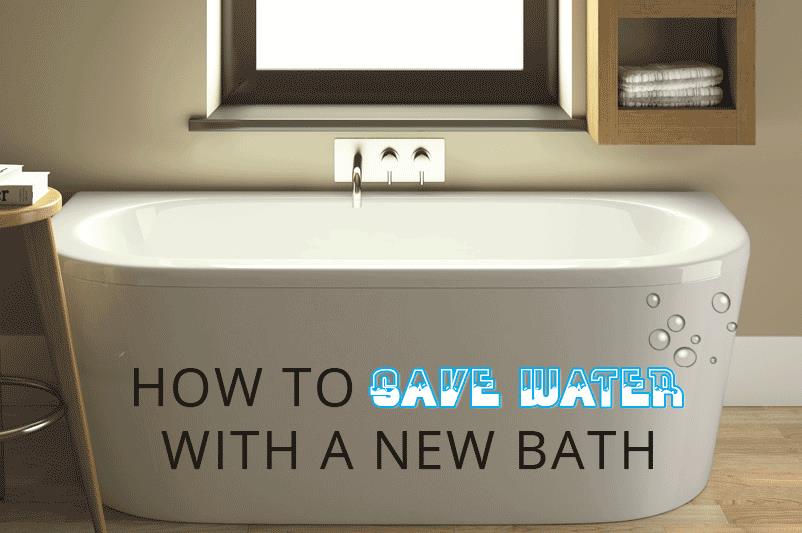
In recent years, people have been encouraged to use of showers instead of baths as part of their daily routine. This is primarily due to the greater volume of water that is required to fill a bath, compared to the amount needed to supply a shower. While it's never advisable to have a bath every day, especially if there's an alternative way of cleaning yourself, there's nothing wrong with treating yourself to a soothing, relaxing soak. Despite the trend towards showering instead of bathing, it isn't impossible to save water with a new bath. If you do want to enjoy an occasional bath, it's important to waste as little water as possible. There are a number of ways to reduce your water consumption, both in terms of your personal habits and keeping some things in mind when purchasing a new bathtub.
One of the keys to saving water while using your bath is to ensure that you choose a bathtub that is suited to your needs. This entails a few different things. First and foremost, only buy a bathtub that fulfils your size requirements and doesn't exceed them unnecessarily. If you're the only person using your bath and you're slightly over five feet tall, it won't be very efficient to bathe in a gigantic, double ended bath. On the other hand, if you play basketball for a living, you'll probably want to steer clear of the smaller sizes if you want to fit anything more than your torso into the tub. Double ended baths are usually larger but may actually provide a water saving solution if they're shared, giving you an excuse to enjoy a relaxing bath with a loved one while also doing your part to save water.
Your bath type is another important choice. If you want to alternate between bathing and showering but only have a limited amount of space, a shower bath is probably your best option. Shower baths feature a flat standing area at the foot end, meaning you can have a comfortable, safe showering experience without the need for a separate enclosure. The only downside to shower baths it that the expanded foot end inevitably results in a greater capacity, meaning you'll need more water to fill it. If you shower more than you bathe, a shower bath is an excellent investment but should probably be avoided if you bathe more frequently. Even smaller baths will almost invariably result in more water use than a shower, unless you spend the better part of an hour using your shower. This is especially true if your shower uses a modern, water saving shower head, which creates a similar spray pressure while using less water. Unfortunately, there's no equivalent solution for baths, other than not completely filling the tub
There are a number of modern bath designs that were created with water saving in mind. By creating their bathtubs with a more ergonomic shape instead of a traditional flat interior, these water saving baths have less wasted space. How they reduce their interior capacity varies from model to model; this can be as having a more gentle slope at the top end of a single ended bath, or making the foot end narrower. These baths should help you save water while also providing a more comfortable bathing position, though it's even more important to find the right size bathtub. Some corner baths achieve a similar effect by incorporating a seat into the design, offering somewhere to sit while taking care of bath time tasks such as shaving your legs, while also minimising extra water use.